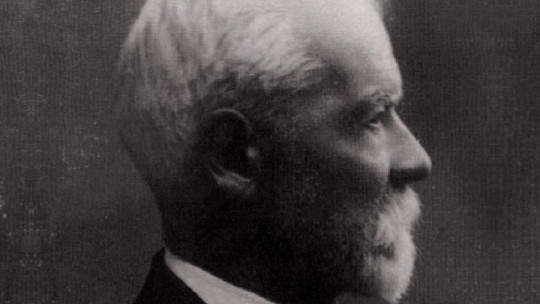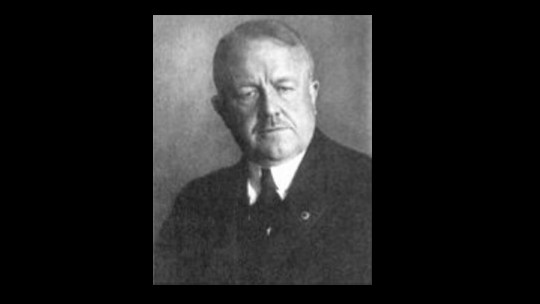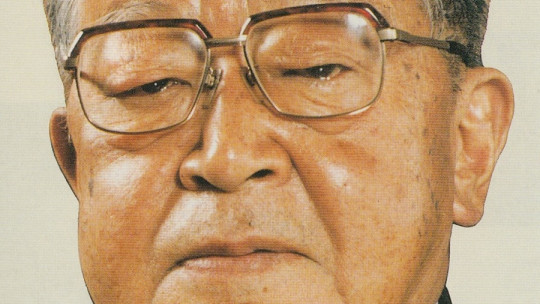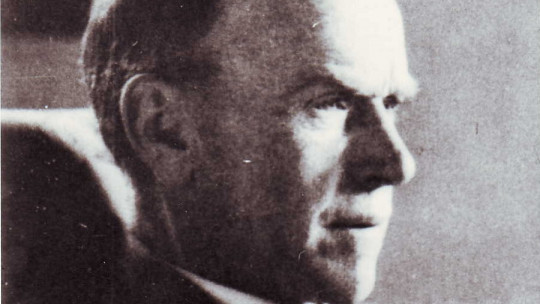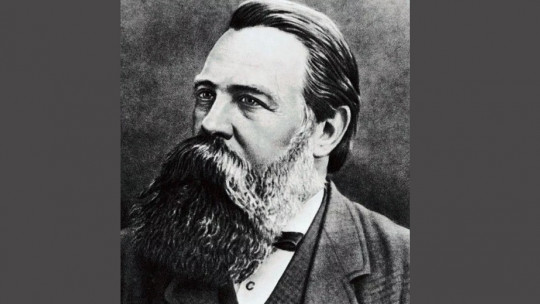Frederick W. Taylor has been a key figure in the development of modern industry, in particular, and organizations in general.
This American engineer and inventor is considered the father of scientific management and his contributions have made the industry the productive sector it is today, going from artisanal production to mass production, creating the modern consumer culture.
Next we will discover the life of this researcher through a biography of Frederick W. Taylor and we will learn about its main contributions to industrial production and work management.
Brief Biography of Frederick W. Taylor
Frederick Winslow Taylor was born on March 20, 1856 in Germantown, Pennsylvania , USA. He grew up in a family with a good economic position, which contributed significantly to his education, having access to university studies.
Youth and visual problems
Frederick W. Taylor began his studies in law at Phillips Exeter Academy, in New Hampshire, although later was accepted to Harvard University This could have been the beginning of a prosperous career as a lawyer but, unfortunately, life dealt him a tremendous setback.
Since adolescence He was showing symptoms of a disease that affected his vision , which was aggravated while he was at Harvard and he had to leave his degree halfway. Furthermore, this rare disease was accompanied by physical problems, which caused him to have a weak body that made it impossible for him to participate in the sports activities that his classmates did.
But despite these problems, Taylor, far from becoming bitter, began to reflect on them and the way in which the physical response of athletes could be improved using instruments and tools that already existed or, at least, using some palliative method. These first reflections would be fundamental in his way of thinking, relating better performance and productivity to the application of certain strategies.
Career path
Fortunately, in 1875 Taylor recovered from his visual problems At this time he joined an industrial steel company located in Philadelphia as a worker. A few years later, in 1878, he worked for the Midvale Steel Company, in Utah, where he quickly rose and performed various jobs: machinist, group leader, foreman, chief of foremen and director of the plans office until reaching the position of chief engineer.
In 1881, at just 25 years old, Frederick W. Taylor began introducing the idea of “time study” at the Midvale Steel Company From a very young age, he was characterized as an extremely observant and meticulous person and, while in the company, he dedicated himself to observing how the workers in charge of cutting the metal material worked.
Taylor He focused on paying attention to how the workers did the entire process, paying attention to each step followed , no matter how simple and banal it seemed. From his observation, he conceived the notion of breaking down work into simpler steps so that they could be analyzed more exhaustively. For him, it was essential that these steps had a specific and strict execution time, well timed.
The scientific organization of work
Still working at the Midvale Steel Company, in 1883 Taylor managed to obtain a degree in mechanical engineering from the Stevens Institute of Technology. He should be given credit for earning that degree, since he studied every night and, during the day, went to his workplace at the company. Thus he got the position of chief engineer in the company, and thereafter he designed and built a new machine shop to increase productivity.
Thanks to his insights from close observation at work, Taylor contributed to the emergence of a new conception of work: the scientific organization of work Intending to investigate this idea further, Taylor decided to leave his job at the Midvale Steel Company and join the Manufacturing Investment Company, where he worked for three years and would develop a new, more targeted approach to engineering. towards management consulting.
His innovative vision of work opened up many job opportunities and, thanks to this, Frederick W. Taylor had the opportunity to participate in various business projects. The last company in which he became involved was the Bethlehem Steel Corporation, where he continued to develop innovative processes to optimize, in this case, processes related to working with cast iron and making pallets.
Retirement, final years and death
At the age of 45, Frederick W. Taylor decided to retire from the workplace , although he continued to offer conferences to disseminate his principles of scientific labor administration. Taking advantage of this retirement he spent time with his wife Louise M. Spooner and his three adopted children, residing in Philadelphia between 1904 and 1914.
During this decade Taylor He received several awards for his idea of time control in industrial production In 1906 the American Society of Mechanical Engineers named him its president and, that same year, he received an honorary doctor of science degree from the University of Pennsylvania. In 1912 he appeared before a special committee of the Congress of the United States of America to present the characteristics of the machinery management system that he had created.
Frederick W. Taylor died on March 21, 1915 in Philadelphia at the age of 59, having turned the day before. He was a very hard worker and was always interested in making his system of scientific work organization known, presenting it at different institutes and universities.
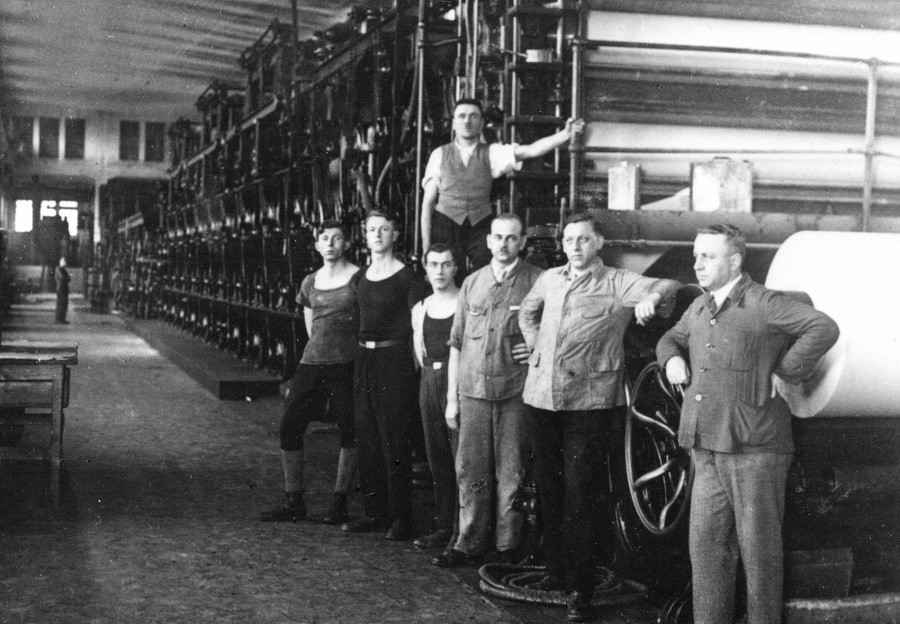
Scientific management theory
Frederick W. Taylor’s greatest contribution to the field of industrial engineering is his theory of scientific management. This is based on generating a system in which employee and employer have the possibility of receiving the greatest amount of benefit possible To achieve this, it is necessary for the administration to adequately train its workers so that their performance is increasingly better, increasing quality, efficiency and production.
Taylor considered that each worker had their own abilities which should be taken into account when ordering them to perform a certain task. Furthermore, through constant training, these skills that they are already good at can be improved in such a way that they are perfected and production increases as a result.
In Taylor’s time the most common conception was that the objectives of employees and bosses could not coincide. However, Taylor argues that this should not be the case, since It is possible to guide both groups towards the same common objective, which is greater and more efficient productivity
Major system errors
For Taylor there were a series of errors that were widespread in 19th century industry and that had to be corrected if greater productivity was to be achieved. Among the main ones we find:
1. Poor management
Industrial administrations were performing poorly due to poor management.
There were downtimes between the tasks that employees performed, resulting in lower productivity and little use of time.
2. Methods that generated exhaustion
Many of the methods that were still used in the industry turned out to be very unhelpful. The worker invested a lot of effort but the system was inefficient causing that effort to end up being discarded.
3. Management was unaware of their company’s processes
It was extremely common for management to be unfamiliar with their own company’s processes, hoping that it would magically produce the desired results.
The administration had little idea of what tasks were carried out in the factory and I also did not know how much time each of the activities carried out consumed.
4. Non-uniform methods
The work methods used in the factories were not uniform, which made the final process very inefficient. Each task within the factory could be subject to different standards making the quality of the final product irregular.
Principles of scientific labor administration
For Taylor, the idea of scientific labor administration is based on four fundamental principles, which are the following:
1. Scientific organization of work
The scientific organization of work is a principle that is directly linked to the action of those in charge of administrative tasks. They are the ones who must make sure that inefficient methods are changed and guarantee that workers will comply with the agreed times for completing each task.
Taylor considered that, in order to comply with this principle, the administration must first know What are the times associated with each activity, what delays they imply, why they occur and what specific actions workers perform in each task.
2. Choice of worker and training
Unlike what many factories did at that time, Frederick W. Taylor advocated that each worker should be chosen based on their specific abilities and skills. It was not at all appropriate to expect that, by simply starting to work, the operator would acquire the skills on his own.
If what you want is to have a high degree of efficiency and quality in production, it is necessary to hire workers who have certain basic skills and have them take charge of tasks in which they will know how to defend themselves. A worker who feels comfortable with what he does is a worker who has well-being, motivating them to do well the task assigned to them
By breaking down the entire production process into simpler and more concrete tasks, it is possible to identify the ideal skills for each of them. Thus, by identifying job candidates who possessed such skills, they can be assigned tasks in which they will perform adequately, thus preventing them from feeling frustrated by the uncertainty of not knowing if they will know how to do it.
3. Cooperation
For the company’s performance to be as desired, there must be cooperation between workers and managers. Although it is the workers who physically operate the system, employees and employers must pursue the same objective: an increase in production and efficiency.
That is why Taylor believed that workers’ compensation should be related to their production That is, they charge based on the amount of work they have done. Knowing that the more tasks completed or products produced, the more the worker will earn, according to Taylor, they will be motivated and work harder to earn better pay. This is also intended to prevent work simulation, that is, employees reducing their productivity or not working at all.
According to the Taylorist mentality, if the worker is paid by the hour he is more likely to reduce his activity if he is not monitored by the boss, limiting himself to doing the minimum to avoid being fired, extending his breaks and waiting for the work day to end. By introducing this system in which you charge for what you produce, employees will look for ways to behave in the most efficient way knowing that this is directly related to obtaining greater income.
Thus, Taylor defends that to achieve cooperation between workers and bosses it is necessary to pay each operator for the unit of work performed but, in addition, a coordinating group of operators must be organized. The coordinators must have in-depth knowledge of the activities carried out by the workers, so that they have the moral authority to give them orders and, at the same time, can train them in more things about the specific task they perform.
Foremen must attend to specific areas in the production chain in order to take charge of coordination of all workers and their tasks. By methodically and thoroughly examining the entire process, you can refine the system, detect critical problems, and assign new tasks to workers who are not performing at their best in their current job.
4. Division of labor between managers and workers
This last principle of Taylor’s is truly innovative for its time, since it implies that it is essential that the workload between managers and workers is equivalent Considers that a fair and coherent division of labor must be sought if what is desired is to achieve maximum efficiency in all processes.
The administration must be in charge of all the elements that have to do with the analysis of situations, generate plans that are linked to the future of the company in addition to looking for strategies to achieve greater benefits.
Contributions from Frederick W. Taylor
Taylor was the first to propose a scientific approach to work. His experience being both an operator and a workshop manager allowed him to understand that workers were not being as productive as they could be and, as a consequence, the company’s performance decreased It was also thanks to this that he understood that only by involving both management and workers in the organization would it be possible to improve its production.
He was against each worker being in charge of producing the product from start to finish, that is, in the traditional artisan way. For example, Taylor did not consider it logical that in a shoe factory all the workers made shoes, that is, cutting the sole, sewing the fabrics, painting them, varnishing them, making the laces… The logical thing was that each worker made a piece, within the time required, there were also those who would be in charge of sewing, putting the pieces together, putting them in boxes and other tasks.
The traditional way involved a lot of time wasting , while the one proposed by Taylor in the form of an assembly line, in which hundreds of units of the same product could be made at a time, implied lower costs and greater productivity per unit of time. Having each worker do a simple task that they were good at greatly speeded up the entire process.
With this he raised the need to plan work, something that, although it is obvious nowadays, at that time was not common at all. Taylor was the first to think that, to create any product in the shortest time, it was necessary to plan the steps to be followed and assign different tasks to each worker, making them all responsible for the final product.
He also introduced the idea of personnel selection, something that is fundamental in today’s human resources departments. It was not possible to expect all workers in a company to know how to do everything or to have the same performance. It was necessary to select and place them to carry out tasks in which they already had a certain command or were good at so that they would be motivated and, thus, have greater productivity and efficiency.
Whenever possible, Taylor advocated that workers should be constantly trained , no matter how good they were at a certain task. The objective of this was to improve production and be able to recycle workers as much as possible. The best thing that both employees and managers could do was train themselves in specific tasks to be attractive to companies, something that is fundamental in today’s work philosophy.
Frederick W. Taylor helped give administrators a greater role. Before, the normal thing was that they could barely do anything and all the responsibility for the industrial process fell into the hands of the operators. However, with the ideas of activity planning, work control and personnel selection as ways to increase production, administrators began to have greater influence in companies. This would be the seed for the creation of industrial engineering as a scientific discipline.


